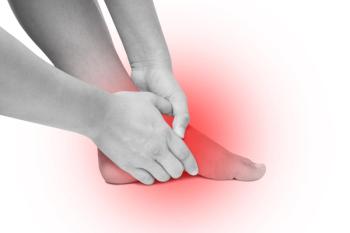
Navigating Pain Management Options for Individuals with Newly Diagnosed Autoimmune Rheumatic Diseases
Over the years, the landscape of pain management has witnessed significant shifts as new research emerges and healthcare practices adapt to changing needs.
Pain management is a necessary aspect of healthcare, especially for patients diagnosed with autoimmune rheumatic diseases. The disability and increased mortality resulting from autoimmune rheumatic diseases are highly associated with the concurrent chronic pain that plagues these patients. Evolving trends and advancements in treatment modalities mark the journey toward effective pain relief.
Those suffering from an autoimmune rheumatic disease are more likely to have depression or anxiety from unrelenting chronic pain.These patients also have increased rates of visits to the emergency room, surgeries and inpatient treatments.
Over the years, the landscape of pain management has witnessed significant shifts as new research emerges and healthcare practices adapt to changing needs. Understanding these trends is essential for providing optimal care and improving patient outcomes. These trends highlight the need to revisit the
A recent
The study included 141,962 patients with autoimmune rheumatic diseases, with the highest number of patients having rheumatoid arthritis (71,393) and the lowest number having systemic sclerosis (3,468). Patients with autoimmune rheumatic diseases such as ankylosing spondylitis, psoriatic arthritis, rheumatoid arthritis, Sjögren’s syndrome, systemic lupus erythematosus (SLE) and systemic sclerosis were included and had at least one diagnosis.
The primary outcome focused on the incidence of opioid use, which increased annually until 2014 but decreased annually after 2014. The secondary outcome measured annual trends for non-steroidal anti-inflammatories (NSAIDs), skeletal muscle relaxants, topical analgesics, and physical or occupational therapy. The incidence of anticonvulsant use increased annually until 2014 and did not significantly change after 2014. The incidence of physical therapy use increased annually until 2014, with a slight decrease after the same year.
The use of pain management modalities varied among different autoimmune rheumatic diseases. NSAIDs and opioids were most commonly prescribed for ankylosing spondylitis, psoriatic arthritis, and rheumatoid arthritis. Antidepressants, anticonvulsants, and topical analgesics were the least widely prescribed for these diseases. Patients with Sjögren's syndrome and systemic sclerosis had a lower incidence of opioid and NSAID use compared to other diseases. Still, opioid use had the highest incidence among pain management modalities for systemic sclerosis.
Patients with ankylosing spondylitis had the most significant decline in opioid use after 2014, while patients with systemic sclerosis had the most decline in opioid use before the same year. Patients with rheumatoid arthritis had the highest increase in anticonvulsant use before 2014. The incidence of antidepressant use decreased annually after 2014 for most conditions, except for patients with systemic sclerosis, where it increased annually.
The study also aimed to compare the use of pain management modalities between different autoimmune rheumatic diseases and non-autoimmune rheumatic diseases, such as osteoarthritis and hypertension. Additionally, it aimed to explore the potential impact of policy shifts and updated clinical guidelines on pain management practices.
Compared to patients with hypertension, a higher proportion of patients with autoimmune rheumatic diseases and osteoarthritis were prescribed pain management modalities. The incidence of opioid prescription decreased since 2014 across all diseases.
This study illuminates the evolving strategies and interventions used to alleviate pain in this patient population, offering valuable insights for healthcare providers and policymakers.
The authors conclude that there has been a shift towards increased use of non-opioid pain management modalities and a decline in opioid and NSAID prescriptions among patients with autoimmune rheumatic diseases in the USA.
This trend reflects changes possibly influenced by policy shifts and updated clinical guidelines. They emphasize the need for further research to assess the long-term effects of these trends on patient outcomes and to address gaps in pain management strategies for less prevalent conditions.
The authors also highlight the importance of updated clinical guidelines, evidence-based approaches, and future studies to evaluate the effectiveness of the observed changes in pain management modalities.
Newsletter
Get the latest industry news, event updates, and more from Managed healthcare Executive.






















































